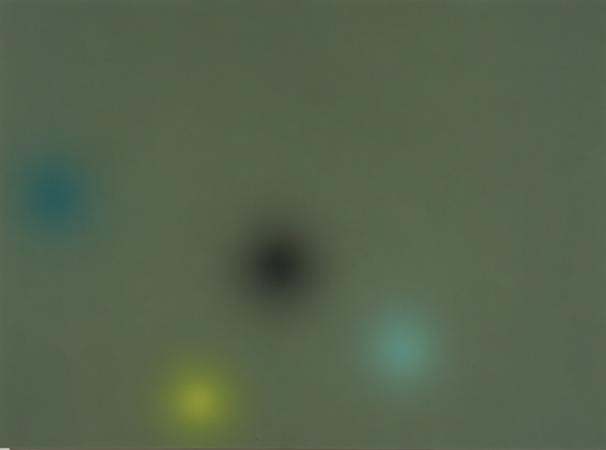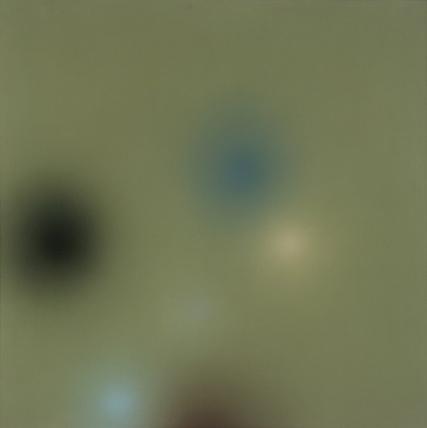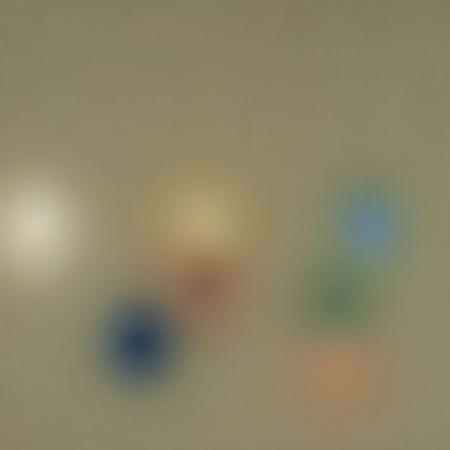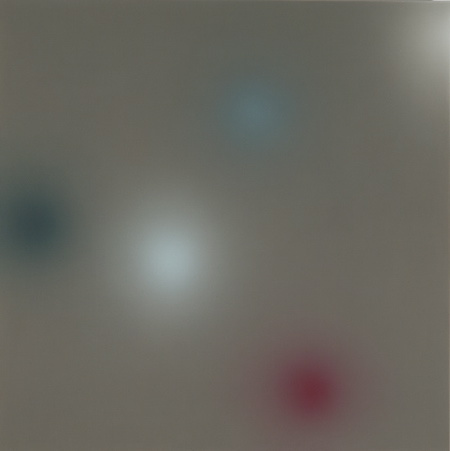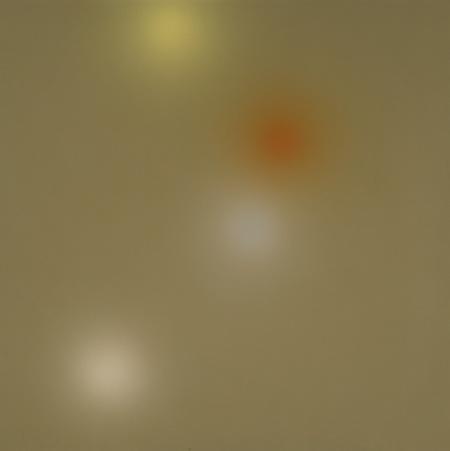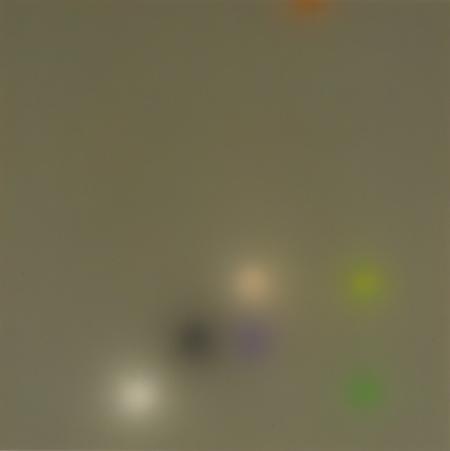Joe Macca continues his exploration of subtle shifts of color. This rich body of work is so luminous that at first glance the viewer might think they are made of glass. The paintings are abstract, on panel; lustrous color fields, with pulsating spots of varying hues.
Colors are repeatedly glazed in oil and built up with approximately 100 coats of paint.
They are based on the objective color of various humble, found things such as insects, weeds and birds. Between 3 and 7 colors are scrutinized from each object. Macca created a contrived system of chance in order to develop and compose the paintings. The added forms are placed by using a system of assigning a number, 1- 6, to each color. The number/color is chosen by the roll of the dice. That color is then placed within an invisible grid on the color field. These individual colors are added by airbrush onto the original color field.
Joe Macca has a background in film and earned a Master of Fine Arts degree from Portland State University. He is a winner of the Open Studios 2004 Pacific Coast Competition. A selection of his paintings will be published in New American Paintings, Volume 55, due out January 2005.
"I have taken up the task in my work of paying homage to the humble, the ignored and the unappreciated. I carefully scrutinize the variety of color found in everyday living things: insects, worms, rodents. Through a reduced and contrived program I present the objective color of these beings. Once the four, five or six hues are discerned from an object and mixed and matched, a system of chance dictates the development of the paintings. I employ a numbered grid to randomly determine where the simple orb-like forms that inhabit each color will be placed. Once each form is placed on the painting support, each of those same colors will be thinly glazed over the ground, layer after layer until a rich, atmospheric buildup is achieved. Glazes are also based on chance: each color is assigned a number and dice are rolled to determine the order of layering. Between thirty and fifty glazes are done in order to achieve a glowing representation and tribute to these underappreciated objects."
-Joe Macca
